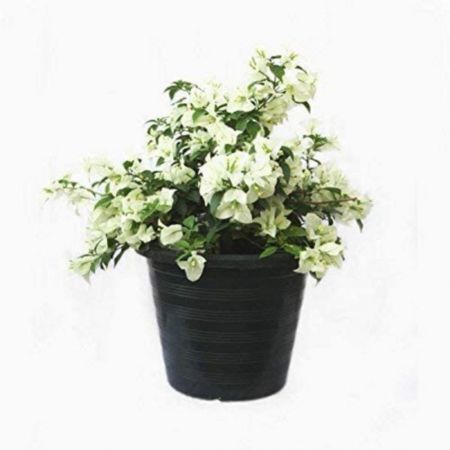<
Kundu Malli Plant
Kundu malli, also known as Arabian jasmine or Sambac jasmine, is a flowering shrub that is native to Asia and is known for its fragrant flowers
₹ 60.00
₹99
(Inclusive of all taxes)
-

No Warranty
-

COD Not Avilable
-

Non Returnable
-

Non cancelable
About this item
- Botanical Name: Jasminum sambac
- Common Names: Kundu Malli, Mogra (in Hindi), Arabian Jasmine, Sampaguita (in the Philippines)
Physical Appearance:
- Leaves: The plant has dark green, glossy leaves that are ovate or lance-shaped. The leaves are smooth and leathery in texture, adding to the plant’s ornamental value.
- Flowers: The flowers of Kundu Malli are highly fragrant, white, and star-shaped. They are typically 5-petaled, with a delicate, waxy appearance. The flowers are very small but grow in clusters, forming dense bunches at the ends of branches.
- Flower Fragrance: The most notable feature of Kundu Malli is its strong, sweet fragrance. The aroma is often described as heady and intoxicating, making it a popular choice for use in garlands and religious offerings, as well as in perfumes.
Size and Growth:
- Size: The plant can grow as a shrub or a small tree and typically reaches a height of around 2-4 meters (6-12 feet).
- Growth Habit: It is a woody shrub with a bushy habit. The plant is often cultivated in pots or as an ornamental shrub in gardens.
Cultivation:
- Climate: Kundu Malli thrives in tropical and subtropical climates. It requires a warm environment to grow well and is quite hardy once established.
- Soil: It prefers well-drained, slightly acidic to neutral soil. It can tolerate a variety of soil types but does best in rich, loamy soil.
- Watering: It needs moderate watering. Overwatering should be avoided as it can lead to root rot. The plant prefers regular watering, especially during dry spells, but the soil should not remain soggy.
Uses:
- Cultural and Religious: The flowers of Kundu Malli are used in many cultural and religious practices, especially in Hindu temples, where they are offered to deities. They are also woven into garlands for auspicious occasions such as weddings and festivals.
- Aromatherapy and Perfume: Due to its pleasant fragrance, the flowers are widely used in perfumes and aromatherapy.
- Medicinal: In traditional medicine, parts of the plant have been used for various purposes, such as promoting relaxation, and treating headaches, and skin conditions.
- Decoration: The plant is a popular ornamental shrub and is often grown in gardens for its fragrant blooms.
0 Review Of Product Kundu Malli Plant




.jpg)

.jpg)
.jpg)
.jpg)




